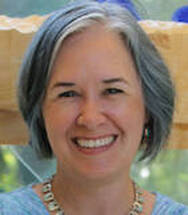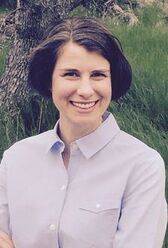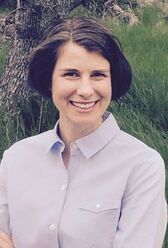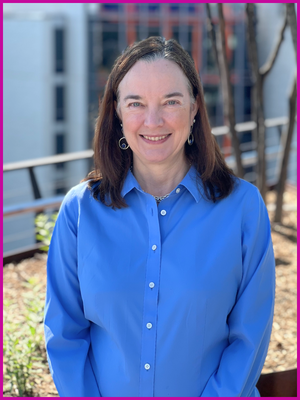Those intrepid leaders founded the non-profit Independent Curriculum Group, led first by Bruce Hammond, then by Peter Gow as executive directors. The ICG Principles of Independent Curriculum became a call to action for schools seeking to design and implement high quality, mission-based, teacher-created curriculum and assessments. In 2019, the Independent Curriculum Group merged with One Schoolhouse. One Schoolhouse’s active relationships with schools and innovative pedagogy provided natural pathways for helping schools move from principles to practice. The two organizations began planning to release the next iteration of the principles in a format that provided a road map for academic leaders. Before that could happen, the rapid school shutdowns of spring 2020 led One Schoolhouse to ask, “How can we help?” Drawing on ICG principles, One Schoolhouse quickly released a set of standards intended to guide schools through the next months: our “Course Standards and Teacher Competencies for Hybrid Course Design, Development, and Delivery.” Little did we realize at the time of writing that these editable standards would become foundational guides for hundreds of schools in the 2020–21 school year. Now, as we begin 2021, we’re returning to focus on the ideas that inspired the ICG–One Schoolhouse merger. Today, we’re excited to release a set of clear standards for the design and delivery of advanced-level courses--standards that expand the original Principles of Independent Curriculum while remaining firmly rooted in the practical experiences of two organizations, now united, as we move forward to help schools transform education. We created these standards to support, rather than dominate, the work of each teacher in each school, and to invite teachers to build advanced-level courses whose content and structure acknowledge and honor the students in their own classrooms. The Standards for Advanced Independent Curriculum that we are presenting describe and provide guidance for the development of learning programs that:
We present these standards in the hope that they will, by reflecting the deeply held beliefs and proven effective practices of schools and educators, invigorate the work of teachers and inspire students. As Peter suggests in a recent One Schoolhouse blog post, standards like these are long overdue. To read "Where Have You Been All My Life? Standards That Can Work For Schools & Kids," click here.
0 Comments
 Peter Gow Peter Gow Say the words “standardized testing” to any student anywhere, and you will strike fear into a young heart. Say the words “standards and accountability” to teachers anywhere, and you will strike fear into their hearts. The S Words. Standardization and standards. But it didn’t have to be that way. Whatever value what Nicholas Lemann has called The Big Test may have had for the urgent sorting of soldiers during World War I, a century and two pandemics later, universal standardized testing has been revealed as having been all along a tool for sustaining inequities. Its outsize role in American education also adds enormous stress to the lives of students and their teachers and families, whether in relation to college access or as a hammer for pounding out perceived unevenness in the quality of public education. In the latter role it has stunted the development of creative curriculum by teachers and been used as a tool not for the improvement but for the punishment of underfunded schools and hardworking teachers in poor communities that are “underperforming” by standardized measures—even knowing the palpable effects of systemic racism and economic inequality. The Common Core Standards were an attempt to build universal accountability measures into the matrix of “school improvement.” In many cases, however, educators report that teaching to these can have a stultifying effect on creativity and student curiosity. Beyond the Common Core you’d have to look pretty hard for a useful generalized body of published standards for learning. Some discipline-related professional organizations have developed their own content standards, like the American Council of Teachers of Foreign Language and the Next Generation Science Standards. But fully articulated and applied standards for learning at a single school, say, are kind of hard to come by. I remember the first time I was at an independent school about to undergo regular accreditation and how surprised I was to learn that the process had essentially nothing to do evaluating course-by-course or grade-by-grade academic quality. In independent schools we have let outcomes speak for themselves, often citing standardized testing data as a proxy for “academic excellence” and trotting out college and next-school lists to further prove value. Of course, historically, independent schools have been bastions of just the kind of systematized inequity and white privilege that standardized testing has sustained. We’re all trying to do better, but we need new tools for creating the kinds of truly equitable “academic excellence” and “high standards” often touted by independent schools as their most desirable virtues. In February of 1991 the late Grant Wiggins brought S Words together in an article titled “Standards, Not Standardization.” Educational Leadership’s subhead for the piece laid out the case: “Our schools must no longer accept token efforts judged by variable criteria. We must expect quality from every student based on models of outstanding performance.” We instinctively know and are made uncomfortable by the fact that idiosyncratic-by-teacher-or-department unwritten academic “standards” must often be sussed out by anxious students and lack consistency from class to class and teacher to teacher. Grant called us to account for this, as he and others led us in moving schools toward the use of understanding-based curriculum and assessment design. The school where I worked in the 1990s even bought a “Standards, Not Standardization” resource kit for helping our faculty adopt “backwards curriculum design.” Even so, a continuing challenge has been the absence of articulated learning measures that aren’t either content-based or so prescriptive as to squelch individual teacher creativity or fail to meet real students in real schools where they are. Independent schools have the great good fortune to have built-in tools for discovering, articulating, and developing their own standards. The process of exploring a school’s full curriculum often begins with a “Picture the Graduate”-type exercise that asks faculty to consider the student outcomes implied and even promised by the school’s various statements of mission and values. These ideals spell out the promise made by the school to students and families and ought to be our Pole Stars for designing academic programming. But it has long been a challenge to help faculties and academic leaders translate these general foundational and aspirational statements into the language of real standards that can be used by teachers to create and deliver student learning experiences with consistent expectations for engagement and quality. When the Independent Curriculum Group and One Schoolhouse came together in 2019, a new pathway presented itself: to merge the ICG’s long-standing clarion call for schools to use their missions and values as the basis for all they do and One Schoolhouse’s decade of experience designing and delivering courses to a set of rigorous and consistent standards that offer students from different schools across the world a reliably solid learning experience. In our Standards for Advanced Independent Curriculum, One Schoolhouse provides a tool to help individual schools draw upon their own, specific missions and values to create high-level courses that serve up to their very own students high-quality, challenging, and meaningful learning experiences. At last, these standards offer schools a tool for bringing mission, values, and standards together and for documenting and continuously evaluating whether their promises are truly being kept in their classrooms. Welcome, standards we can use! We’ve waited a long time for you!  Kerry Smith Kerry Smith Many educators have long known that the strength of the student-teacher relationship is the greatest factor in improving students’ learning outcomes. Fewer know that research also shows a direct correlation between those relationships and faculty satisfaction in their profession--strong relationships create more joy and less work-related anxiety. We are living in a year of unprecedented disruption in our society and in our schools. So far as I can tell, the 2020-2021 school year isn’t going to make it to the top of anyone’s “best of” lists, least of all students and teachers. That’s why for the remainder of this school year is important for academic leaders and educators to focus on relationships. Last spring, twin pandemics disrupted learning. Educators felt overworked at the same time that students felt underserved. The upheaval of distance learning further underscored the institutional inequalities inherent within American schools as calls for social justice coupled with the momentum of the Black Lives Matter movement, produced the Black@ social-media moment. BIPOC faculty and students shared their experiences with daily microaggressions and outright racism in schools, and in the process predominantly white institutions were held accountable for the broader failure of many schools to ensure genuine belonging. At the time when relationships were most crucial, connections faltered. Therefore, it isn’t surprising that independent schools face unprecedented challenges going into the 2021-22 school year. Attracting and retaining constituents in our schools (students, faculty, staff, and administrators) brings us full circle to the topic of today’s post: building and sustaining positive relationships. In January, NAIS published its Staff Predictions for the Future of Independent Schools predicting, “the value of human connection and interaction will increase” and “the result will be more balance, appropriate pacing, time to breathe, appreciation for each other, and joy.” As you continue to assess your curricular objectives and program outcomes, make sure that you design in the time that educators and students need if they are to sow, cultivate, and reap positive relationships. Teachers might be inclined to increase the pace of instruction to boost student progress. Resist that temptation. By building relationships, teachers can cultivate their students’ strongest performance. The time that teachers liberate from planning and disseminating content will allow them to spend more time on what matters most: the right relationships, opportunities to personalize instruction, and the creativity that unfolds when students are invited to drive their own learning. Let go of more content and unlock opportunities for greater good in your class: joy in the daily process, community that values equity and belonging, and the deep cultivation of life-long learning skills.  Corinne Dedini Corinne Dedini During this school-year-unlike-any-other, and more than ever before, independent schools have become more flexible about what teaching and learning looks like--online options, hybrid options, and on-campus options abound. Families and students have flexibility, autonomy, and choice about what works best for them, in their current situations. As we start to see the glimmer of light at the end of the tunnel of the pandemic, academic leaders will be wise not to return to the assumption that all learning has to happen in a classroom, on a campus, at a particular time. Because we've shown that the old rules don't apply, families are pushing past old boundaries, requesting--and expecting--schools to be more flexible and accommodating. Now, the new paradigm of school is facing its first test: to offer or not to offer online or hybrid options for the 2021-2022 school year. We hear from every school that we talk to that some percentage of families (more or less, depending on the market) are asking about options for hybrid or online enrollment in the coming school year. Academic leaders, at the same time, are wary about creating these options for what is likely a small percentage of students. The reasons for the wariness are legitimate: zooming remote students into live classes isn’t working well for students or teachers; and expecting teachers to create comprehensive learning experiences for both online and in-person students isn’t reasonable. Losing those families who want to continue with remote learning isn’t in a school’s financial interest. After this transformational year, schools have an opportunity to demonstrate to families and students that they have learned and grown from the pandemic. There are potential solutions for offering an online or hybrid program in 2021-2022 that don’t have to repeat the slog of this school year. The two most likely are:
If this second option sounds interesting, please do not hesitate to send me an email so that we can learn more about what your school is thinking and make sure to meet your needs.  Corinne Dedini Corinne Dedini “It’s a sit on your desk sort of day, Ms. Dedini!” Jana said it as a command, not a request. My class of 16 Honors Chemistry students knew what she meant. We all settled in (teacher taking seat on desk, as instructed) for what needed to be talked out before we could return to acid and base equilibrium. Adolescence is a constant search for equilibrium, and chemistry -- or any subject for that matter -- is just another vehicle to explore, expand, discover limits, and find ways to return to center. The problem is that in most schools, the curriculum isn’t “independent” enough from its content anchors to be seen this expansively. If January 6, 2021, wasn’t a day to halt instruction in every chemistry class across the country and use human behavior as a metaphor for activation energy or precipitation or redox or neutralization (metaphors aren’t that hard to find in chemistry), then how did chemistry teachers diffuse all the chemicals that flooded the adolescent brains so they could keep teaching chemistry? And, perhaps more importantly, why did those chemistry teachers think that it was more important to teach chemistry than to teach children that day? Classroom teachers want to grow strong, analytical minds, but they are held captive by their content-driven syllabi. The solution is independent curriculum, wherein teachers never have to sacrifice teachable moments for the day’s agenda. In the simple scenario above, that Honors Chemistry class was designed backwards from competencies -- the outcomes and aptitudes of a chemist and a citizen scientist. If a student could explain acid-base chemistry via the data they generated in the titration lab, that’s an A. But if a student could explain neutralization using a metaphor from the quelling of social discord with some qualitative analysis on paper, then that’s a valid path to mastery of the topic too. Independent curriculum let me do that. Make no mistake: both kinds of kids are ready for college chemistry. But the teacher didn’t abdicate their responsibility to respond to the teachable moment because the content gods said “stick to the schedule,” the neurotransmitters flooding the adolescents’ brains weren’t ignored, and the students basically stayed on the path to learning chemistry. Independent curriculum lets teachers and students be present every single day because of, not in spite of, what’s happening outside the classroom. |
Don't miss our weekly blog posts by joining our newsletter mailing list below:AuthorsBrad Rathgeber (he/him/his) Archives
July 2024
Categories |


 RSS Feed
RSS Feed